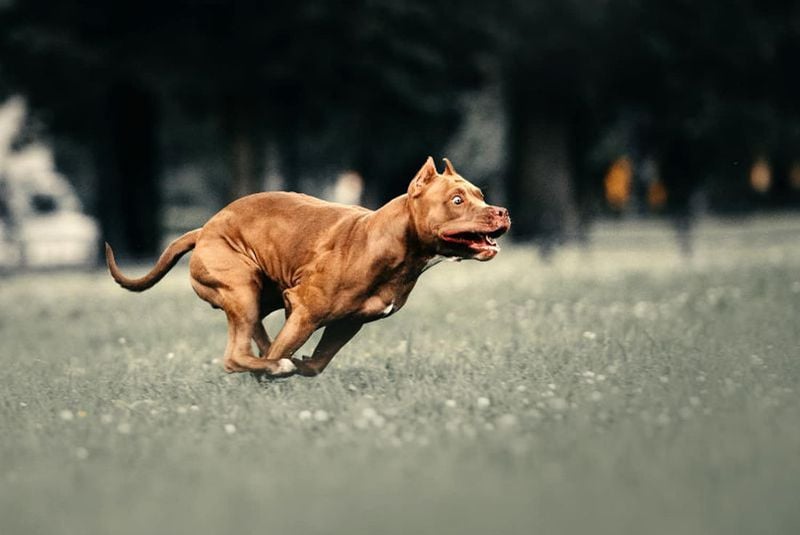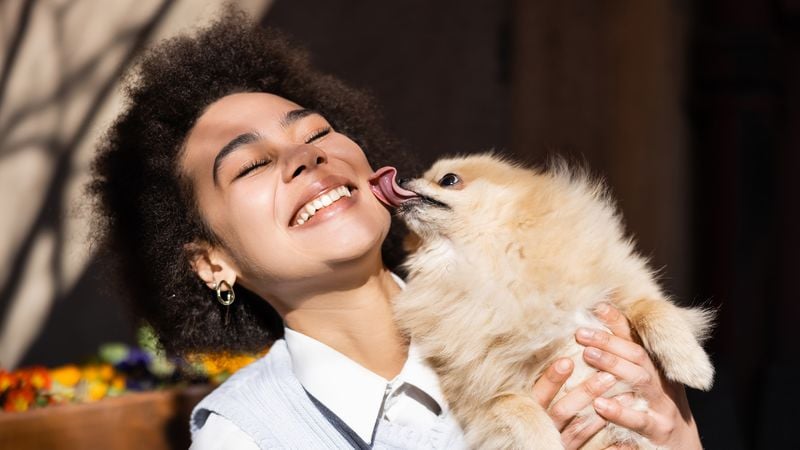Behaviorists Decode the Top 13 Strange Things Dogs Do
Ever caught your furry friend doing something weird and wondered what’s going through their mind? Dogs have their own unique language of behaviors that often leave us scratching our heads.
Animal behaviorists have studied these quirky canine habits for years, uncovering the fascinating reasons behind what might seem like random doggy decisions.
Understanding these behaviors can help strengthen your bond with your four-legged companion and ensure their needs are being met.
1. The Secret Language of Tail Wagging
Not all tail wags mean happiness! The position and speed of your dog’s tail actually communicate very different emotions. A high, stiff wag might signal alertness or even aggression, while a low, gentle wag typically shows submission or nervousness.
The direction matters too. Studies show that dogs tend to wag more to the right when they’re happy to see something familiar, like you coming home. Left-side dominant wagging often happens when they’re cautious about something.
Watch for the full-body wiggle—that’s pure joy. When the whole rear end gets involved in the wagging action, your pup is expressing their absolute delight in seeing you.
2. Curious Head Tilts
That adorable head tilt your dog does isn’t just for cute photos. Dogs tilt their heads to better locate the source of interesting sounds, adjusting their movable ear flaps to capture more audio information. This behavior helps them process what they’re hearing more effectively.
Some behaviorists believe head tilting also indicates your dog is trying to understand human speech. When you use words they recognize or speak in an engaging tone, they’re actively trying to comprehend what you’re saying.
The head tilt might also give dogs a better visual angle. With their muzzles potentially blocking part of their view, tilting helps them see your facial expressions more clearly.
3. The Mystery of Zoomies
Suddenly your calm dog transforms into a speed demon, racing around the house or yard in wild circles! These energy explosions—officially called Frenetic Random Activity Periods (FRAPs)—typically happen after bath time, during play, or when your dog has been confined too long.
Zoomies serve as a pressure release valve for excess energy or excitement. Young dogs zoom more frequently, but even senior pups occasionally feel the need for speed. Most zoomies last just a few minutes before your dog returns to normal.
While generally harmless, create a safe zooming environment by clearing obstacles that could cause injury during these enthusiastic outbursts.
4. Why Your Dog Licks You Constantly
Those slobbery kisses have deeper meaning than you might think. Wild canine mothers lick their puppies to groom and show affection, and your domestic dog continues this instinctual behavior with their human family. When your dog licks you, they’re often expressing love and care.
The behavior serves practical purposes too. Dogs gather information through taste and smell, so licking you helps them learn about where you’ve been and what you’ve touched. Some dogs also enjoy the slightly salty taste of human skin.
Excessive licking, however, might indicate anxiety or discomfort. If your dog suddenly increases their licking behavior, it could be worth checking with your veterinarian.
5. Pawing Communication Tactics
When your dog places their paw on you, they’re literally reaching out to connect. This gesture evolved from puppyhood, when they pawed at their mother to stimulate milk flow. Now, they use this same motion to initiate contact with their favorite humans.
The context matters significantly. A gentle paw during cuddle time simply means “more pets, please” while an insistent paw during mealtime translates to “I’m hungry!” Some clever canines learn that pawing reliably captures your attention, turning it into their go-to communication method.
Pawing can also express anxiety or insecurity. If your dog paws excessively during thunderstorms or when you’re preparing to leave, they might be seeking reassurance.
6. The Ancient Art of Howling
Your dog’s mournful howl connects them to their wolf ancestors who used this vocalization to communicate across vast territories. Modern dogs howl for similar reasons—to announce their presence or respond to certain sounds like sirens, musical instruments, or even your singing voice.
Howling serves as a social bonding activity. When multiple dogs howl together, they’re strengthening pack connections. This explains why your dog might join in when they hear distant howls or even when you try to howl yourself!
Some dogs howl when experiencing separation anxiety or loneliness. If your normally quiet pup suddenly starts howling when left alone, they might be calling for their missing pack members—you.
7. Digging Drives Explained
Finding backyard craters courtesy of your four-legged friend? Digging satisfies several powerful canine instincts. Wild canines dig dens for shelter and protection, and your pampered pooch retains this ancient programming despite having a comfortable dog bed.
Temperature regulation motivates much digging behavior. On hot days, dogs dig to find cool earth to lie on, while in cold weather, they might create a warm, insulated nest. Some breeds like Terriers were specifically developed to dig out burrowing prey, making the behavior especially strong in these dogs.
Boredom and excess energy often trigger recreational digging. Providing alternative outlets through exercise, puzzle toys, and dedicated digging areas can save your garden while honoring this natural behavior.
8. Chewing Beyond Puppyhood
Your favorite shoes became casualties because chewing fulfills fundamental canine needs. Puppies chew during teething to relieve painful gums, but adult dogs continue the behavior for different reasons. Chewing naturally cleans teeth and strengthens jaw muscles—essential for wild canines who tear through tough food.
The behavior also provides mental stimulation and stress relief. When dogs feel anxious or bored, chewing releases endorphins that create a calming effect similar to how humans might bite nails when nervous. This explains why many dogs chew more when left alone.
Rather than punishing this natural behavior, redirect it to appropriate items. Rotating different textured chew toys keeps the experience novel and satisfying for your furry friend.
9. Belly-Up Vulnerability
Rolling over to expose that spotted tummy represents the ultimate display of trust from your canine companion. In the wild, exposing vital organs makes animals vulnerable to attack, so when your dog shows you their belly, they’re demonstrating complete confidence in your goodwill.
This position serves multiple purposes beyond trust. During warm weather, dogs expose their less-furry undersides to cool down more efficiently. The belly-up posture also communicates submission, especially when meeting more dominant dogs or during corrective interactions.
While many dogs enjoy belly rubs in this position, watch their body language carefully. Stiff legs or a tense expression might indicate they’re showing submission rather than requesting tummy scratches.
10. Yawning Beyond Tiredness
When your dog yawns during training class, they’re probably not bored—they’re stressed! Canine yawning frequently signals anxiety or social discomfort rather than sleepiness. This calming signal helps dogs self-soothe during overwhelming situations like veterinary visits or crowded environments.
Yawning also serves as communication between dogs and even between species. You might notice your dog yawning after you scold them or when meeting unfamiliar people. They’re signaling non-threatening intentions and attempting to diffuse tension.
Fascinatingly, dogs often catch human yawns, showing their emotional connection with us. Studies suggest that dogs who yawn after seeing their owners yawn demonstrate higher empathy levels and stronger bonds.
11. Ears Back Body Language
Your dog’s ear position offers a direct window into their emotional state. When those ears flatten against the head, your pup is communicating submission, fear, or anxiety. This instinctive response helps protect sensitive ear tissues during potential conflict situations.
The degree of ear flattening reveals important nuances. Slightly back ears might indicate mild concern or uncertainty, while completely flattened ears pressed tightly against the head signal significant fear or stress. Always consider this signal alongside other body language cues for accurate interpretation.
Breed differences matter tremendously when reading ear positions. Floppy-eared breeds like Basset Hounds show more subtle changes than pointy-eared dogs like German Shepherds, whose ear movements are more pronounced and easier to observe.
12. The Significance of Leaning
When your dog presses their weight against your legs, they’re not just being clingy—they’re expressing profound trust and affection. This behavior mimics how puppies huddle together with siblings and their mother for security and warmth.
Leaning creates physical connection that reinforces your bond. Dogs are highly tactile creatures who value touch as communication, and by maintaining body contact, they’re strengthening your relationship. Some dogs lean more during thunderstorms or fireworks, seeking reassurance during frightening situations.
For some dogs, especially herding breeds, leaning might also represent a subtle form of control or herding behavior. They’re keeping track of your location and movements while maintaining close proximity to their valued human resource.
13. Decoding Different Barks
Your dog’s varied vocal repertoire contains specific messages if you know how to listen. Short, sharp barks typically signal alertness to potential threats or strangers approaching your territory. These warning barks usually come in quick succession with pauses between each sound.
Continuous rapid barking with higher pitch often expresses excitement or play invitation. You’ll hear this when you grab the leash or when your dog sees a canine friend. Low-pitched, sustained barking or growling indicates serious concern or potential aggression—your dog perceives a genuine threat.
Lonely dogs frequently bark with a howl-like quality, especially when left alone. This mournful sound represents their attempt to locate absent pack members and relieve the distress of separation.



















